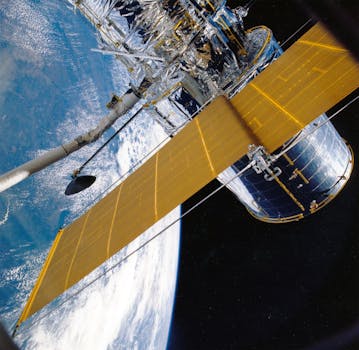LEO Satellites: Revolutionizing Global Connectivity with Low Earth Orbit Technology

LEO Satellites: Introduction to Low Earth Orbit Technology
LEO satellites, or Low Earth Orbit satellites, are artificial satellites that orbit the Earth at an altitude of around 160 to 2,000 kilometers. This relatively low altitude allows LEO satellites to provide low latency and high-speed connectivity, making them ideal for real-time communication and data transfer applications. The focus keyword LEO satellites is the key to understanding the technology and its applications. In recent years, the development and launch of LEO satellites have gained significant momentum, with several companies and organizations investing heavily in this technology.
One of the primary advantages of LEO satellites is their ability to provide low latency connectivity. Unlike traditional geostationary satellites, which orbit the Earth at a much higher altitude and have a latency of around 600-800 milliseconds, LEO satellites have a latency of around 20-30 milliseconds. This makes them suitable for applications that require real-time communication, such as video conferencing, online gaming, and remote healthcare.
Applications of LEO Satellites
LEO satellites have a wide range of applications across various industries. Some of the most significant applications include:
Global connectivity: LEO satellites can provide internet connectivity to remote and underserved areas, bridging the digital divide and enabling access to information and communication technologies. This is particularly important for developing countries, where traditional telecom infrastructure is often lacking.
IoT connectivity: LEO satellites can provide low-power, low-cost connectivity for IoT devices, enabling the widespread adoption of IoT technology in various industries such as agriculture, transportation, and healthcare.
Earth observation: LEO satellites can be used for Earth observation, providing high-resolution images and data on the environment, climate, and natural resources.
Navigation: LEO satellites can provide navigation services, including positioning, tracking, and timing.
Challenges and Limitations of LEO Satellites
Despite the many advantages of LEO satellites, there are also several challenges and limitations to their development and deployment. Some of the most significant challenges include:
Interference: LEO satellites can interfere with other satellite systems and wireless networks, causing signal degradation and loss of connectivity.
Orbital congestion: The increasing number of LEO satellites in orbit can lead to orbital congestion, increasing the risk of collisions and making it difficult to manage and regulate satellite traffic.
Regulatory framework: The regulatory framework for LEO satellites is still evolving and is often unclear, creating uncertainty and challenges for companies and organizations looking to develop and deploy LEO satellite systems.
Future of LEO Satellites
Despite the challenges and limitations, the future of LEO satellites looks promising. With the increasing demand for low latency and high-speed connectivity, LEO satellites are likely to play a critical role in the development of next-generation wireless networks, including 5G and 6G.
In addition, the development of new technologies such as satellite-based quantum computing and advanced propulsion systems is expected to further enhance the capabilities of LEO satellites, enabling new applications and use cases.




